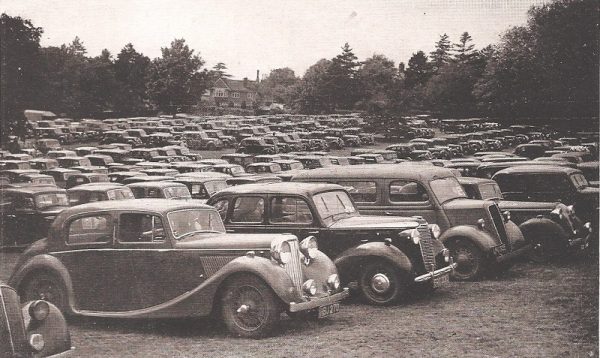
Our Snapshot this week illustrates a highly popular milestone: on 1st June 1948, motorists could buy petrol again for the first time since 1942 – albeit still rationed at a level even lower than six years previously.
At the outbreak of the Second World War, petrol was the first commodity to be rationed – because all of it had to be imported. Then in 1942 came the complete withdrawal of petrol for private use. Only those doing work considered to be essential – and with a permit to prove it – could obtain any at all. A red dye was added to fuel supplied to these approved users, and anyone using this fuel for non-essential purposes was committing an offence.
Cars became a rarity on the roads of Britain, and worse was to come: many large cars were confiscated or ‘requisitioned’, and were used as vans or ambulances.
Every cloud, however, has a silver lining. Stories are told of children suddenly able to play in the streets without any worries about traffic – with one youngster often sliding down a long, steep road on a home-made trolley-cum-sledge without ever seeing any sort of vehicle.
The delight of the ordinary motorist in 1948 can be imagined when they could once more use their cars. This picture, from ‘The Sphere’ weekly magazine of 12th June 1948, shows one of the car parks at the Suffolk Agricultural Show at Ipswich. The caption explains that such a show would always have seen a fair attendance by farmers going about their “lawful occasions” even when motoring was banned, but that the return of the ordinary motorist was here plain to see. On the front row we can see an eclectic mix, from the relatively posh Jaguar (or SS Jaguar if it is a pre-war car – we hope someone will tell us), through a Vauxhall 14 to a down-to-earth Fordson E83W van.
‘The Sphere’ tells us, however, that the London-Brighton Road on 1st June was still relatively empty, probably because it was a weekday. Motorists preferred to save their meagre ration for the weekend.
It was not until 26th May 1950 that petrol rationing ended and the use of red dye in commercial petrol was abolished. The government estimated an increase in fuel consumption of one million tons a year, of which about 430,000 tons would be supplied by US firms. The rest would come from newly expanded refineries in Britain. But the poor quality of petrol in the UK was not expected to improve until refineries – such as those in Southampton and Cheshire – were completed. This would not happen before 1952.







Leave a Comment